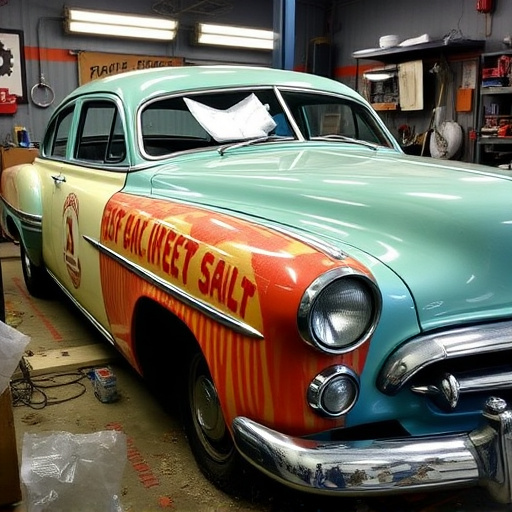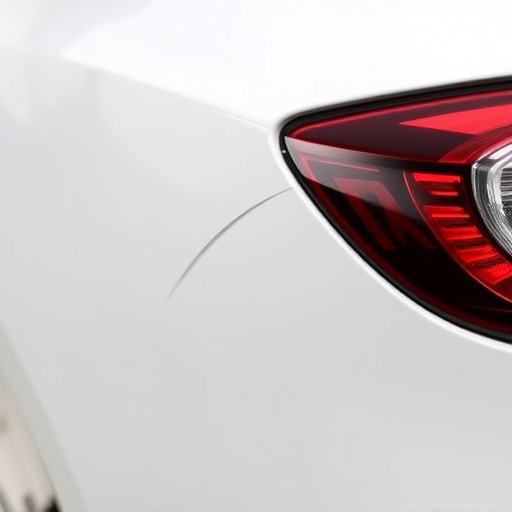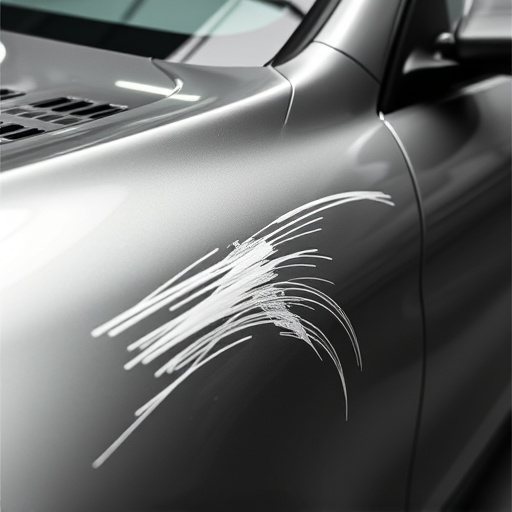Mastering Concours Level Repair: Tools & Materials Guide

Concours level repair is a specialized automotive craft focusing on meticulous restoration of classi…….
In an era where the preservation of cultural heritage meets modern restoration techniques, concours level repair has emerged as a meticulous and highly specialized field. This article delves into the intricate world of concours-level restoration, exploring its significance, global impact, and the multifaceted aspects that contribute to its success or challenges. By examining various facets, from economic implications to technological advancements, we aim to provide an authoritative guide to understanding this art form and its role in shaping our cultural landscape.
Concours level repair refers to the meticulous restoration of historical artifacts, buildings, or sites to their original condition, as determined by archaeological evidence and historical records. It is a precise and scientifically driven process that goes beyond simple repairs; it involves reconstructing, preserving, and interpreting cultural heritage with an unwavering commitment to authenticity.
The core components of this discipline include:
Archaeological Excavation: Careful excavation techniques are employed to uncover and document artifacts and structures, providing a foundation for subsequent restoration work.
Historical Research: Extensive research delves into the history and context of the site or artifact, ensuring that all interventions align with known historical facts.
Material Conservation: This involves selecting appropriate materials and methods for repair, replacement, or reconstruction, considering factors like durability, aesthetics, and environmental impact.
Technical Expertise: Specialized skills and knowledge are applied in various disciplines, such as masonry restoration, wood conservation, metalwork, and painting techniques, to accurately recreate historical elements.
Historically, the concept of concours level repair has its roots in the 19th-century European movement to preserve and restore ancient monuments and buildings. This era witnessed a surge in archaeological interest and a growing appreciation for cultural heritage, leading to more meticulous restoration practices. Over time, this approach evolved, incorporating advanced technologies and scientific methods while adhering to strict conservation principles.
Concours level repair is a global endeavor, with every region contributing unique challenges and successes to its trajectory. The varying cultural, historical, and environmental contexts shape the specific techniques and priorities in each location.
Europe: Renowned for its rich history, Europe has been at the forefront of advanced restoration practices. Countries like France, Italy, and Germany have developed meticulous conservation standards, attracting international attention for their restoration projects.
North America: In the United States and Canada, there is a growing emphasis on preserving indigenous heritage sites, often involving collaboration with indigenous communities to ensure culturally sensitive restoration.
Asia: Countries like Japan and China have long-standing traditions in wood and paper conservation, which are now being applied to modern restoration projects, especially in the context of ancient temples and historical documents.
Sustainability and Environmental Awareness: A growing emphasis on sustainable practices is shaping restoration projects worldwide. This includes using eco-friendly materials, minimizing site impact, and implementing energy-efficient strategies in restored buildings.
Digitalization and Documentation: Advanced technologies, such as 3D modeling, laser scanning, and virtual reality, are being utilized to create detailed digital archives of historical sites and artifacts, aiding in preservation and future research.
Community Engagement: There is a growing recognition of the importance of community involvement in restoration projects. Engaging local communities ensures cultural sensitivity and fosters a sense of ownership and pride in preserving heritage.
The economic landscape of concours level repair is complex, involving various stakeholders and market dynamics. Understanding these aspects is crucial for the sustainable development of this field.
Project Scale: The size and scope of restoration projects vary widely, from small-scale historical home renovations to massive urban redevelopment initiatives. Each project has unique cost structures and funding sources.
Public vs. Private Funding: While some restoration work is funded by government agencies or non-profit organizations, private funding plays a significant role, particularly for larger-scale projects. This often involves partnerships between businesses, developers, and cultural heritage institutions.
Global Market Trends: The global heritage conservation market is experiencing steady growth, driven by increasing cultural awareness and a rise in international tourism focused on historical sites.
Tourism Development: Restored historical sites often become popular tourist attractions, generating revenue for local economies. This economic impact encourages investment in high-quality restoration projects to enhance the visitor experience.
Real Estate Value: In urban areas, the redevelopment of historically significant buildings can significantly increase property values and attract businesses, creating a positive feedback loop for investment in conservation.
Cultural Heritage as Assets: Governments and private investors are recognizing cultural heritage sites as valuable assets, not just for their historical significance but also for their potential to drive economic growth and community development.
Technological innovations have revolutionized the field of concours level repair, offering new possibilities and precision in restoration work. These advancements range from digital tools to advanced materials, each contributing to more effective and sustainable practices.
3D Modeling and Printing: 3D modeling software allows for the creation of detailed digital replicas of historical structures or artifacts. This technology is combined with 3D printing to reproduce lost elements, providing a precise and traceable way to recreate historical features.
Laser Scanning: Laser scanners capture highly accurate 3D data of sites or objects, serving as a comprehensive digital record for documentation, research, and reproduction.
Virtual Reality (VR) and Augmented Reality (AR): VR and AR technologies offer immersive experiences for both restoration experts and the public, enabling them to explore historical sites virtually and enhancing educational opportunities.
Advanced Adhesives: Modern adhesives provide stronger bonds and greater flexibility, facilitating the repair of delicate materials like ancient manuscripts or fragile ceramics.
Eco-friendly Materials: Researchers are developing sustainable alternatives for traditional building materials, aiming to reduce environmental impact while maintaining structural integrity.
Biomimicry: Drawing inspiration from nature, biomimetic materials and techniques mimic the properties of organic substances, offering innovative solutions for conservation. For instance, using bacteria to create bio-based concrete or mimicking wood’s strength through natural composites.
The field of concours level repair is subject to various policies and regulations that govern its practice, ensuring the preservation of cultural heritage while allowing for responsible development.
International Conventions: Organizations like UNESCO have established conventions and guidelines for cultural property protection, setting international standards for restoration practices. These agreements ensure the ethical treatment and conservation of cultural heritage worldwide.
National Heritage Laws: Many countries have enacted legislation to protect historical sites and artifacts, outlining requirements for restoration work, including permits, site preservation, and public consultation.
Building Codes and Zoning Regulations: Local building codes often include provisions for historic preservation, dictating the extent of alterations allowed in culturally significant buildings.
Authenticity vs. Reconstruction: Restorers must navigate the delicate balance between recreating historical accuracy and preserving the integrity of existing structures or artifacts. This ethical dilemma is especially prominent in cases where only fragments remain.
Cultural Sensitivity: Restoration projects, particularly on indigenous sites or cultural properties, require a deep understanding of cultural contexts to avoid inappropriate interpretations or disrespectful interventions.
Documentation and Transparency: Thorough documentation of restoration work is essential for academic research, public accountability, and future conservation efforts.
Despite its many achievements, the field of concours level repair faces several challenges and criticisms that require thoughtful strategies for resolution.
Funding and Resource Constraints: Restoring historical sites can be costly, often requiring significant financial resources and specialized skills. Limited funding can hinder projects or lead to compromises in quality.
Preserving Authenticity: Balancing modern restoration techniques with the need to preserve historical authenticity is a constant challenge. As new materials and methods emerge, ensuring they complement rather than overpower the original structure remains crucial.
Environmental Factors: Restoring sites in diverse climates or environments presents unique challenges. Extreme weather conditions, natural disasters, or environmental pollution can impact the long-term preservation of restored structures or artifacts.
Cost and Benefit Analysis: Critics often question the financial viability of restoration projects, especially when competing with development pressures. A robust cost-benefit analysis that considers economic, social, and cultural returns can address this concern.
Community Involvement: Some argue that restoration efforts should prioritize local communities’ voices and knowledge. Engaging stakeholders, including indigenous groups and local historians, ensures a more inclusive and culturally sensitive approach.
Research and Training: To counter criticism about the lack of scientific rigor, investing in research and training programs can enhance the field’s credibility. Promoting academic partnerships and fostering interdisciplinary collaboration strengthens restoration practices.
Real-world applications of concours level repair offer valuable insights into its potential and the strategies employed for successful outcomes.
After the devastating fire in 2019, the restoration of Notre-Dame Cathedral became a global priority. This case study exemplifies the challenges and precision required in such a high-profile project:
Challenges: The fire caused significant structural damage, and the restoration faced intense public scrutiny. Ensuring the cathedral’s structural integrity while recreating its historical appearance was a complex task.
Solutions: French experts employed advanced engineering techniques to stabilize the damaged structure. 3D modeling and laser scanning were used to document the cathedral’s condition precisely. Traditional craftsmanship combined with modern materials ensured the restoration aligned with historical standards.
Lessons Learned: This project highlights the importance of interdisciplinary collaboration, including architects, engineers, conservators, and historians. Public engagement and transparent communication are vital for managing expectations during major restoration efforts.
The discovery of the Qin Shi Huang’s tomb complex in Xi’an, China, presented a unique challenge to preserve these ancient terracotta warriors:
Challenge: The warriors were vulnerable to environmental degradation and theft. Preserving their intricate details while ensuring visitor access required innovative solutions.
Solutions: A controlled climate system was implemented to regulate temperature and humidity within the museum. Advanced security measures, including surveillance technology, protected the warriors from theft. Conservators used specialized materials to stabilize and conserve the terracotta sculptures.
Lessons Learned: This case shows that combining traditional conservation methods with modern technology can create effective preservation strategies. Balancing public access and environmental control is crucial for long-term preservation.
The field of concours level repair stands at an exciting crossroads, with emerging trends pointing towards a dynamic future.
Sustainable Conservation: As environmental awareness grows, sustainable conservation practices will become the norm, focusing on eco-friendly materials and energy-efficient restoration techniques.
Digital Heritage Preservation: The digital revolution will continue to transform heritage preservation, with virtual reality experiences enhancing visitor engagement and accessibility. Advanced data analytics can provide new insights into historical sites.
Community-Driven Restorations: There will be a greater emphasis on community participation in restoration projects, fostering cultural ownership and ensuring interventions align with local values and traditions.
Biomimicry and Biodegradable Materials: Researchers will explore nature’s solutions further, developing biodegradable materials inspired by biological structures for conservation.
Blockchain Technology: Blockchain has the potential to revolutionize provenance records, ensuring transparency and authenticity in the art market and cultural heritage documentation.
Artificial Intelligence (AI): AI can assist in restoration projects through pattern recognition, virtual modeling, and predictive analysis, streamlining processes and enhancing accuracy.
Concours level repair is a meticulous and vital discipline that plays a pivotal role in preserving our cultural heritage. From its historical roots to modern innovations, this field has evolved to meet the demands of a changing world. By navigating economic considerations, embracing technological advancements, and addressing challenges through thoughtful policies and strategies, the future of heritage restoration looks promising.
As we look ahead, the global community must continue to support and invest in concours level repair to ensure that historical sites and artifacts are preserved for future generations. This article aims to contribute to this effort by providing a comprehensive understanding of this specialized field, its impact, and its potential trajectory.
Q: How do I know if a restoration project is authentic?
A: Authentic restoration involves careful research and adherence to historical evidence. Restorers should document their processes and provide transparent reports, allowing for public scrutiny and academic review.
Q: Can technology replace traditional restoration techniques?
A: Technology enhances restoration but doesn’t replace traditional skills. Advanced tools assist restorers in achieving precision and accuracy, while traditional craftsmanship remains essential for certain tasks.
Q: What role does community engagement play in restoration?
A: Community engagement ensures cultural sensitivity and ownership. Involving local residents and historians can provide valuable insights into the history and significance of a site, guiding restoration interventions.
Q: How do we balance the cost of restoration with its long-term value?
A: Restoration projects should conduct comprehensive cost-benefit analyses, considering economic, social, and cultural returns. Effective planning and funding strategies can ensure sustainability and long-term preservation.
Q: What are some sustainable practices in heritage conservation?
A: Sustainable practices include using eco-friendly materials, implementing energy-efficient strategies, and minimizing site impact during restoration. These methods contribute to environmental preservation while restoring historical sites.

Concours level repair is a specialized automotive craft focusing on meticulous restoration of classi…….

Concours level repair sets high standards for automotive restoration, demanding precision, detail, a…….

Concours level repair sets the bar for automotive excellence, demanding precise techniques and origi…….

Concours level repair is a specialized process that restores collector cars to near-perfect conditio…….

Concours-level repair sets an unparalleled standard for vehicle restoration, focusing on flawless ae…….

Concours level repair is a specialized art demanding extreme precision and expertise from body shop…….

Preparating a surface for concours level repair involves meticulous cleaning, defect inspection, and…….

Concours level repair in automotive restoration aims to revive vehicles to their original, flawless…….

Concours level repair is a meticulous art form focused on restoring classic cars to flawless excelle…….